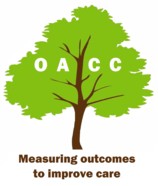|
Frequently Asked Questions
Should I switch to IPOS if I am already using a POS measure? I am new to POS, which POS measure should I use (POS/POS-S/IPOS etc.)?
If you are currently using POS, POS-S or APCA African POS, and are happy with it, we suggest you continue. If you are seeking a symptom measure for use in a specific disease population, we suggest you follow the link to disease-specific measures.
If however you are introducing a measure for the first time, we suggest you look at IPOS, understanding that validation studies for IPOS continue and it may evolve. If you do decide to use IPOS, because it is relatively new- we would like to work with you as it is developed. Please notify us of your use of IPOS by email to . If you are still unsure which is best for your situation, please follow the link which will detail the different POS measures.
IPOS is available on the download pages. There is a page for the English versions and a page for translations.
You do not have to alter your practice to use POS measures. They can be used and incorporated into clinical routines to help focus on issues relevant to patients receiving palliative care.
We recognise that sometimes it is insensitive to use the words "Palliative Care" when using the "Palliative care Outcome Scale"; for instance if prognosis and palliative care have not been discussed yet, or someone prefers not to discuss it. In this case, the label 'Patient Outcome Scale' can be used for any of the versions as appropriate for your population, as this is only the label for the measure, rather than a change to the content. However, the measures should be used intact, without adaptation, in order to retain the psychometric properties already reported.
If I am with my patient when they complete their POS questionnaire is there any point in me completing my assessment as well?
In clinical practice it is not essential to complete both a patient and staff version of the IPOS as the POS family of measures has been validated for both patient and staff use. However it can be useful to collect data from both patient and staff perspectives. This produces complementary data that can be used for comparison.
In order to provide a meaningful interpretation of results, it is important to qualify the reasons for any missing data. There can be many reasons for missed assessments, for example, the patient may not feel able to respond to a question (they may not wish to comment on the question on self worth) or they may not have family (for the question on family anxiety) or they may be confused. A note should be made giving the reason why the assessment or question was missed. Subsequent data analysis and interpretation should take into consideration the reasons for the missing data.
The POS family of measures can help identify the issues that are most relevant to patients at the time of the assessment. As palliative care patients live with their condition, expectations can change, as will the priority they attach to particular issues. The POS family of measures can capture patients’ shifting perspectives. The POS family of measures do not assume that particular symptoms or issues will remain constant. Completing the staff measure allows the aspects which staff feel are important to be reflected. This difference and possible reasons should be explained to patients and their family.
How do I know if higher scores reflect poor management for the patient as opposed to the patient deteriorating as a result of their condition?
If a patient is deteriorating as a result of their condition, POS scores often increase. However, staff should try to manage symptoms and subsequently stabilise or lower the scores. When POS is used regularly, scores can be compared with the patient’s clinical condition and reported in their medical notes. If a patient continues to have high scores, this might indicate that further attention is needed.
If the complete OACC suite of measures is being used then the AKPS and Barthel scores can indicate the deteriorating function and dependency and this provides context to the POS/IPOS scores.
All three POS measures (POS/POS-S/IPOS) can be used with a 3 day recall period or a one week recall period. Your choice depends on the setting and circumstances of your use of the measure. We recommend using the 3 day recall period for inpatients (both hospice and hospital), and using the 7 day recall period for community based patients.
Please note the frequency of use of measures and recall period is not the same. Frequency of use refers to how often the measure should be administered and recall period refers to the time length each question asks the patient to reflect on when answering.
POS and IPOS can be collected at fixed or varying time intervals (for example, at the start and change of phase of illness). We recommend that POS/IPOS is used at start and change of phase. See the OACC page for more information.
OACC has it's own webpage on the King's College London site, you can access it here.
Why do the individual POS item scores get added together to give an aggregate score? What is the use of the aggregate score and can it not cause potentially more problems than benefits?
Several people had concerns about this as the individual items don't necessarily carry the same importance or weighting. Therefore, although your score could go down overall some more important items may have got worse giving a false overall impression of improvement. One delegate mentioned that they used the total scores for screening new community hospice referrals and who to prioritise for visiting - this caused a big debate with many clinicians feeling this was a potentially dangerous thing to do as someone scoring highly on pain would clinically be prioritised over someone scoring highly on needing help with activities around the house (as an example). This difference wouldn't be picked up from looking at the aggregate scores and hence the argument then developed that if people shouldn't just look at these totalled scores then what is the point it doing them?
POS has been researched extensively and many publications about POS are available. See "publications" in the menu above.
You can change your password and profile details using the "Profile" link next to your name (when logged in). You can recover your username and/or password by using the "Forgotten your username or password" option on the login page. If you have problems with using the pos-pal site please email .
Requests for further information, queries and suggestions for developing the POS should be directed to the POS development team:
|
POS supporters and collaborators
|
You are not logged in. Login or Register
« Feb 2015 Workshop
© 2012 Cicely Saunders Institute
Terms and conditions
Site map
Contact
About us »







